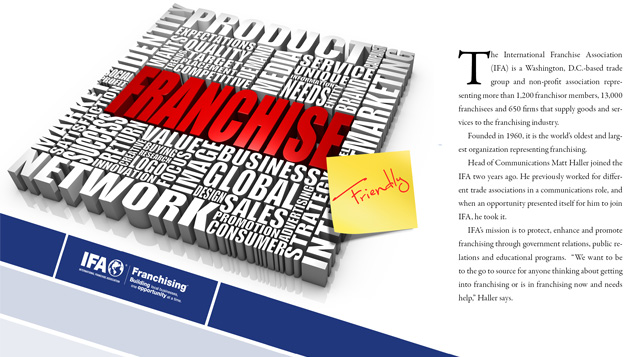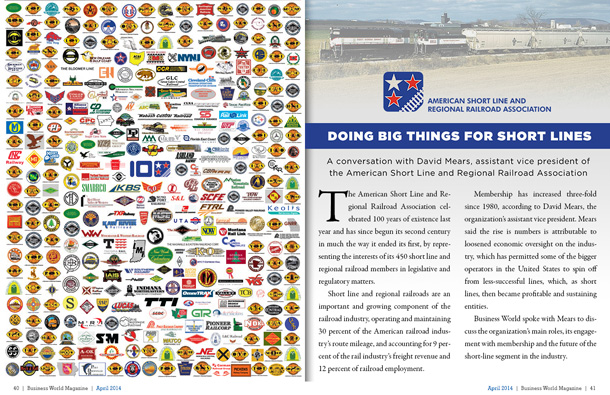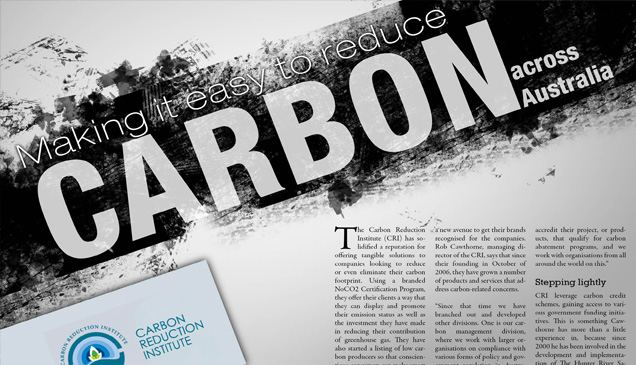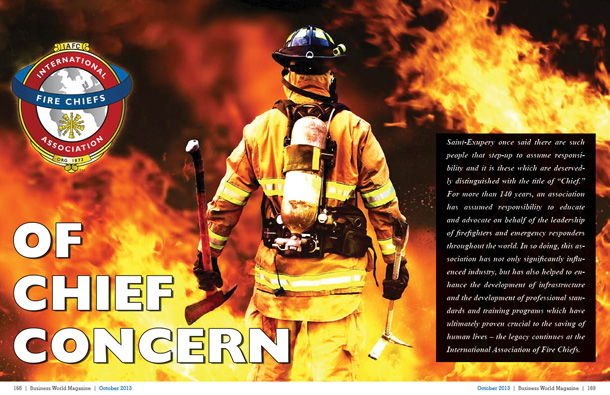
Of Chief Concern
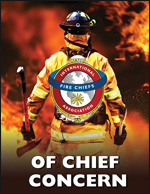
Saint-Exupery once said there are such people that step-up to assume responsibility and it is these which are deservedly distinguished with the title of “Chief.†For more than 140 years, an association has assumed responsibility to educate and advocate on behalf of the leadership of firefighters and emergency responders throughout the world. In so doing, this association has not only significantly influenced industry, but has also helped to enhance the development of infrastructure and the development of professional standards and training programs which have ultimately proven crucial to the saving of human lives – the legacy continues at the International Association of Fire Chiefs.
The International Association of Fire Chiefs emerged from the wake of two devastating fire events (Great Conflagrations) which respectively ravaged Chicago in 1871 and Boston in 1872. The toll in human casualties, loss of municipal infrastructure and crippling economic impact was so extreme to rank these events among the worst national disasters ever to occur in 19th Century America. Yet, in this same era, the Chief Engineer of the Boston Fire Department (John Damrell) pushed for the creation of a national organization of fire professionals with the belief that by coming together, those in the fire service could better exchange insight on products, practices and policies, but also better effect change that would prevent such tragedies from ever happening again. Given widespread support, this led to the establishing of the National Association of Fire Engineers in 1873, with Damrell as the first president. As membership and programs grew, it would be rebranded as the International Association of Fire Chiefs. Today, the IAFC has grown to not only represent the world’s leading authority on firefighting, but also the greatest experts in emergency medical services, terrorism response, hazardous material spills, natural disasters, search & rescue and public safety legislation. The IAFC continues to serve as a vital resource that helps its members exchange ideas, develop professionally and uncover the latest products and services available to first responders.
Though fire departments are unceasingly deserving of respect as public service entities tasked in the prevention and extinguishing of fire as well as emergency medical services, there can be no overstating of the extraordinary impact these professionals have made in respect to commercial manufacturing, building construction and community development. The fire services touch so many aspects of life that it would be difficult to encapsulate in any one article, but for an example, consider the changes which have taken place in construction techniques and building materials. The IAFC was front and center in the creation of new laws which helped define the first National Building Code. The IAFC additionally collaborated with the National Builders Association, the National Building Inspectors Association, the Board of Fire Underwriters and the American Institute of Architects to develop the first building code for universal application. In terms of manufacturing, the IAFC helped spur standardization in the production of hoses, couplings, alarm systems and so much more. The services fulfilled by members of the IAFC have prompted advancement in a range of enterprises from vehicle manufacturing and shoe & uniform manufacturing to communication systems, software technology and the list goes on. The fire services have made a beneficial economic impact to a host of industries, yet the significance of that is overshadowed, if not obscured, by the greater beneficial impact fire professionals have made through their dedication in protecting property and protecting human life.
Protecting property, private citizens, and also fire service personnel, is a penultimate concern of all IAFC members says Chief Hank Clemmensen, the IAFC’s 2012-2013 President and Chairman of the Board. “It is so important for all of us to partner with private sector businesses, especially when it comes to public safety and preventing fires … it is not something we can do alone … fire safety is everyone’s fight,†says Chief Clemmensen.
Though Chief Clemmensen acknowledges that private sector partnership have been good, and have helped spur the development of many important programs with positive results, he also says that there are always challenges to be confronted when dealing with change. “Nothing is ever easy, especially if it means that we have to do the right thing and create change in the way we do business,†says Chief Clemmensen while making a point about enforcement of building codes and fire safety regulations. He says changes often prompt adverse response from those who believe government is being too intrusive or too regulatory. “Some people get upset, but we have to keep pushing to do the right thing… the codes are there to not only protect property and the people that occupy a property, but also our firefighters who are responding. We shouldn’t have to unnecessarily risk our lives as often as we do to protect other life and property from situations that could have been prevented,†says Chief Clemmensen.
Safe Building Code Incentive Act
The IAFC has partnered with the Insurance Institute for Business & Home Safety (IBHS) in urging the House of Representatives and the Senate to enact the Safe Building Code Incentive Act (SBCIA). The measure helps provide financial incentives for states to adopt and enforce strong building codes. “There is no question among first responders, and the fire service in particular, that strong building codes provide vital life safety protection during natural disasters, such as wildfires,†says Chief Clemmensen.
He adds enactment of the SBCIA is important because thirty-four states currently fail to put the power of modern building science to work for their homeowners, businesses and taxpayers. If approved the bill would provide qualifying states with an additional four percent of funding available for post-disaster assistance if they agree to utilize nationally recognized model building codes, in this case, the International Residential Code from either of its most recent updates (2012 or 2009).
Hazardous Material Response
The IAFC is also heavily engaged in creating change with respect to hazardous materials. To put that in proper context, it is essential to understand that over the course of any weekday, there may be up to a million different shipments of hazardous materials making their way over the road or over rail. While the vast majority safely reaches its intended destinations without consequent, when an accident occurs, local fire and EMS are dispatched to duty. The vast and varying chemical dynamics among the range of oil, natural gas or other chemicals which may be confront prompt different approaches in terms of proper response. The gear or retardant used to mitigate impact in one situation may be very different from that used in another situation, but responders may not immediately know what they’re dealing with.
The IAFC is working with the Pipeline Hazardous Material Safety Administration (PHMSA), the Federal Rail Administration and various state and local agencies (as well as the private sector) to devise new solutions in training and information sharing to better respond when emergencies happen. Chief Clemmensen says the IAFC is partnering with rail lines in an initiative that will allow firefighters/first responders to have quicker access to bills of laden involving hazardous material transport, an initiative designed to provide quicker access to information in the event of a derailment or other emergency.
As for training, in 2007, the IAFC and PHMSA successfully created what is known as the National Hazardous Materials Fusion Center, a program that links hazmat teams and responders around the Country through a data and information sharing network. The Fusion Center connected hazmat teams and responders from around the world through a web portal and network, enabling their access to state-of-the art training for response to a variety of hazardous scenarios. Despites cuts in federal funding of the program, the IAFC has continued to keep the training doors open. Due to the variety of hazardous material composition, the variety of that which is being stored or transported throughout the country, and the variety of situations that can be encountered, Chief Clemmensen says it can be costly to provide extensive training, still, the IAFC is moving forward with public and private sector to overcome such challenges.
Though there is sufficient incentive for that, a tragic case-in-point occurred earlier this year when a fertilizer plant in West, Texas, caught fire. As responders rushed to the site, the fire was fueled by anhydrous ammonia producing an explosion so massive that it registered on the Richter scale as an earthquake. Hundreds of people were injured and 17 people were killed, of these, 11 were firefighters. “It’s scary because there are dangers you can’t always see … so we have to make sure the codes are being enforced, that materials are being properly stored and handled, but we also have to have access to information about the materials we’re confronting, and we have to be properly trained and prepared to respond in these kinds of emergencies,†says Chief Clemmensen.
Doing More With Less
Like so many businesses which were impacted by economic recession, the fire services have experienced significant decreases in budgets which has prompted the termination of staff and slowed the acquisition of new equipment and necessary training. What’s more, fire departments have no means of increasing their revenue when operating costs increase, unlike, say, an airline services that raises the price of tickets as fuel costs increase. Chief Clemmensen says confronting challenges born from budget cuts and increased costs currently represent the largest area of concern among IAFC Members. He stresses, however, the concern isn’t over money, but rather safety. “We have to do the same job we’ve always done in protecting residents and protecting property, all while maintaining the safety of our firefighters, but now we have to do it with less resources and less personnel … that creates the kind of worry that keeps you awake at night trying to figure out how you can do it,†he says.
Economic realities have compelled the IAFC to advocate for increased funding and access to grants. The IAFC has also developed new web-based services allowing members to better access information and seek solutions and model practices from peers on a range of operational practices, procedures and programs. Chief Clemmensen says the IAFC continues to provide leadership and service to its members whether they come from a department of 4,000 personnel or only four personnel. Recent efforts have also included what is known as the Labor Management Initiative with the International Association of Fire Fighters. This LMI represents a best practices model for enhancing collaboration between labor and management. In this regard, Chief Clemmensen shares insight that could serve any business and its dealings with unions. “There’s no secret formula to the LMI, but it is based on what has to be done job … and there may be issues whenever you’re dealing with a labor organization, but you have to sit down and be willing to communicate. You have to listen to their issues, and you have to try to work out a solution that creates the best win-win for everyone involved. The IAFF does a great job and they’re integral to our industry. Ours missions are virtually the same in public safety and the safety of firefighters … and we have to work together,†says Chief Clemmensen.
With respect to working together and worker safety, Clemmensen again makes a point about the importance or partnering with private enterprise, suggesting that the fire services can learn from leaders of business. For examples, he says companies such as Honeywell have developed “fantastic†programs involving safety and employee management. Those models can be adopted and implemented throughout fire department for improved safety and efficiency. He also says by partnering with manufacturers, innovations in new kinds of gear or other equipment will can be produced to further prompt safety and efficiency.
“We couldn’t survive without the cooperation of the private sector,†says Chief Clemmensen. “As the IAFC continues to look at how we do our business and exercise care in how we operate when we know there are less resources, we’ll continue to provide leadership in advocating solutions, develop new services for our members and build partnerships that promote safety of the public and our personnel.â€
For more information, please visit their website at: Â Â International Association of Fire Chiefs


